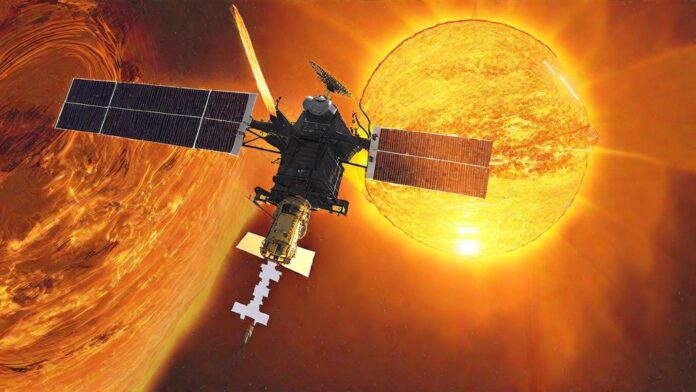About 10 days after the successful landing of India’s Chandrayaan-3 spacecraft on the southern pole of the Moon, India has now successfully launched its first space-based solar observatory mission called Aditya L1. This mission, which weighs over 3,264 pounds, also known as Aditya-EL1, took off from the Satish Dhawan Space Centre in Sriharikota, South India, using a Polar Satellite Launch Vehicle (PSLV-XL) at 11:50 local time on Saturday. It is set to cover a distance of 932,000 miles and will take approximately 125 days (or just over four months) to reach its destination: the L1 Lagrange point, one of five Lagrange points in space that lie on the gravitational axis between the Sun and Earth, allowing the spacecraft to continuously monitor solar activities without any interruptions or eclipses.

Aditya L1: ISRO
India’s space agency, the Indian Space Research Organization (ISRO), has equipped Aditya-L1 with seven payloads, including four for remote sensing and three for on-site experiments. The onboard instruments include a Visible Emission Line Coronagraph, a Solar Ultraviolet Imaging Telescope, an X-ray Spectrometer, a Solar Wind Particle Analyzer, a Plasma Analyzer Package, and a Tri-axial High-Resolution Digital Magnetometer, all designed to collect essential data and observations.
The overall objective of the PSLV-C57 mission, codenamed, is to monitor real-time solar activities and their effects on space weather. The payloads on the spacecraft will study three crucial components of the Sun: the Photosphere, Chromosphere, and Corona. Additionally, three instruments will investigate the local environment at the L1 Lagrange point.

More On Aditya-L1
Aditya-L1, which was allocated approximately $46 million by the Indian government in 2019, was initially conceived in 2008 to study the outermost layer of the Sun’s atmosphere, the solar corona, hence its name ‘Aditya’ (meaning ‘Sun’ in Hindi). However, ISRO later expanded its mission to study the solar and space environment, renaming it Aditya-L1.
In the past, countries like the United States, Europe, and China have conducted space-based solar observatory missions. This marks India’s first foray into this field, as it has previously focused on ground-based observatories.
In addition to Aditya-L1, ISRO has been working on its long-awaited human spaceflight mission, Gaganyaan, with plans set for 2025. Meanwhile, the space agency is also considering launching a human-rated mission to Mars. In June, India signed an agreement with NASA to participate in the Artemis program, a collaborative effort to send astronauts back to the Moon. NASA is also committed to providing training for Indian space travelers at the Johnson Space Center in Houston and plans to launch an international space station in the near future. Furthermore, ISRO and NASA are collaborating on a low Earth orbit mission set to launch in 2024 to map the entire Earth within 12 days, providing continuous monitoring of Earth’s geospatial systems, snow cover, vegetation biomass, sea levels, and natural disasters and hazards.

Additionally, India’s forward-thinking space policy, unveiled earlier this year, aims to foster greater participation from the private sector in its exciting space ventures. India takes pride in nurturing a thriving space ecosystem with more than 150 innovative space tech startups dedicated to crafting cutting-edge solutions for launch vehicles, state-of-the-art satellites, and Earth observation systems. This dynamic synergy between the government and private sector promises a bright future in the final frontier.
Funding for Indian space tech startups increased by 17% in 2022, reaching $112 million, up from $96 million in 2021. Recent data indicates a significant 60% increase in venture investments in space tech compared to the previous year, reaching up to $62 million in 2023, according to analytics firm Tracxn. With eased regulations for foreign direct investment, Indian startups are expected to see increased investments and growth, fulfilling the demands of various stakeholders who have been advocating for this for a long time.”

Cheers for India 🤞🏻❤️🌚👏 #beautifulblog
Thanks
Knowledge is power..thank you for sharing Informative things
Thanks
[…] Also Read: India’s Journey to the Stars: Aditya-L1 and Beyond […]